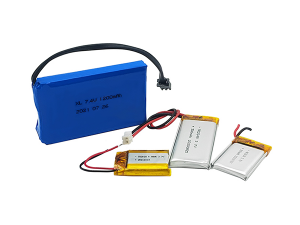Battery short circuit is a serious fault: the chemical energy stored in the battery will be lost in the form of thermal energy, the device can not be used. At the same time, a short circuit also constitutes severe heat generation, which not only reduces the performance of the battery material, but may even lead to fire or explosion due to thermal runaway. In order to eliminate potential conditions in the device that could constitute a short circuit and to ensure that a short circuit does not constitute a dangerous operating condition, we can use COMSOL Multiphysics to study the planning of lithium-ion batteries.
How does a battery short circuit occur?

The battery is capable of converting stored chemical energy into electrical energy. During normal operation, the two electrodes of the battery will produce electrochemical reactions reduction reaction of the negative electrode and oxidation reaction of the anode. During the discharge process, the positive electrode is 0.10-600 and the negative electrode is positive; during the charging process, the two electrode characters are switched, that is, the positive electrode is positive and the negative electrode is negative.
One electrode releases electrons into the circuit, while the other electrode takes electrons from the circuit. It is this favorable chemical reaction that drives the current in the circuit and thus any device, such as a motor or a light bulb, is able to obtain energy from the battery when connected to it.
A so-called short circuit is when electrons do not flow through the circuit connected to the electrical device, but move directly between the two electrodes. Since these electrons do not need to do any mechanical work, the resistance is very small. As a result, the chemical reaction is accelerated and the battery begins to self-discharge, losing its chemical energy without doing any useful work. When short-circuited, the excessive current causes the battery resistance to become hot (Joule heat), which can damage the device.
Mechanical damage in the battery is one of the causes of short circuit. If a metallic foreign object punctures the battery pack or if the battery pack is damaged by kneading, it will constitute an internal conductive pathway and constitute a short circuit. The "pinprick test" is the standard safety test for lithium-ion batteries. During the test, a steel needle will pierce the battery and short it out.
Prevent short-circuiting of the battery
The battery or battery pack should be protected against short circuit, including measures to prevent the battery and the same package of conductive materials in contact with each other. Batteries are packaged in boxes for transport and should be separated from each other within the box, with the positive and negative poles oriented in the same direction when the batteries are placed side by side.
Preventing short-circuiting of batteries includes, but is not limited to, the following methods.
a. Where feasible, use a completely enclosed inner packaging made of non-conductive material (e.g., plastic bags) for each cell or each battery-powered device.
b. Use an appropriate means of isolating or packaging the battery so that it cannot come into contact with other batteries, equipment, or conductive materials (e.g., metals) within the package.
c. Use non-conductive protective caps, insulating tape, or other appropriate means of protection for exposed electrodes or plugs.
If the outer packaging cannot resist collision, then the outer packaging alone should not be used as a measure to prevent the battery electrodes from breaking or short-circuiting. The battery should also use padding to prevent movement, otherwise the electrode cap is loose due to movement, or the electrode changes direction to cause a short circuit.
Electrode protection methods include, but are not limited to, the following measures:
a. Attaching the electrodes securely to a cover of sufficient strength.
b. The battery is packed in a rigid plastic package.
c. Use a recessed design or have other protection for the battery electrodes so that the electrodes will not break even if the package is dropped.
Post time: Feb-07-2023